Greenpeace traveled to the isolated Nizhne-Svirsky Nature Reserve in Russia's northwestern Leningrad region to clean up plastic waste that is ruining the environment.
How Plastic Pollutes An Isolated Russian Nature Reserve
- By Current Time

1
A pile of garbage collected by a Greenpeace expedition in mid-August. On their first day, they collected 78 kilograms of waste along a stretch of shoreline on Lake Ladoga, most of it disposable plastic.

2
On the shore of Lake Ladoga, Greenpeace Russia's Antonina Yevteshina says: “This garbage comes from cities, tourist sites, boats, and dumps. Unfortunately, it all ends up here, on a deserted shore. It makes you realize that how much the waste moves around uncontrollably.”

3
A bear print on the shore of Lake Ladoga. Only animals can walk freely in the Nizhne-Svirsky State Nature Reserve. Tourists are banned and the reserve's staff walk on special paths.

4
Greenpeace's Dmitry Nesterov says: “Another source of pollution is, first and foremost, St. Petersburg and cities located on the Svir River that flows into Lake Ladoga. We see lots of consumer waste here: plastic wraps, containers, food wraps. Cruise ships are also a source of pollution.”

5
A sign that says "Drink straws."

6
A balloon on the shore. Irina Kozlovskikh says: “At school graduation parties in St. Petersburg, people release balloons into the sky. The reserve and the shore are later littered with them. They don’t burn in the stratosphere. They fall down, polluting the environment and sometimes cause the death of an animal.”
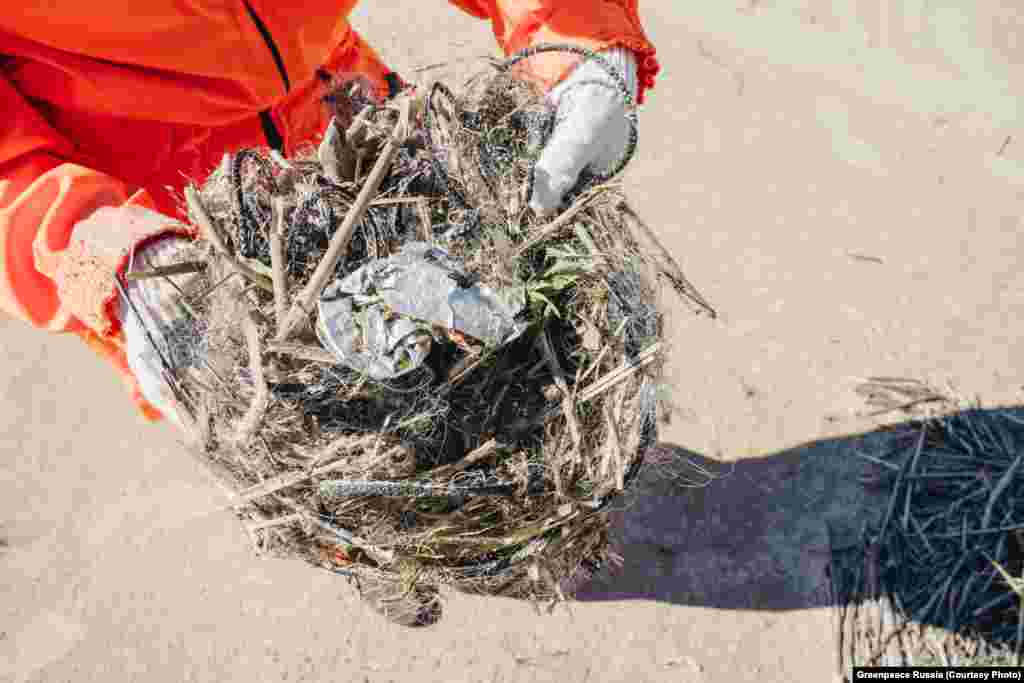
7
Kozlovskikh says: “Most of the waste is disposable plastic bottles and styrofoam fragments. It’s very brittle: if a big panel of plastic foam ends up in Lake Ladoga, it disintegrates into hundreds of small pieces that you can’t collect. Besides, they absorb various substances -- heavy metals, toxins -- so if a fish or a bird eats it, it’s not just a piece of plastic foam, it’s poisonous.”
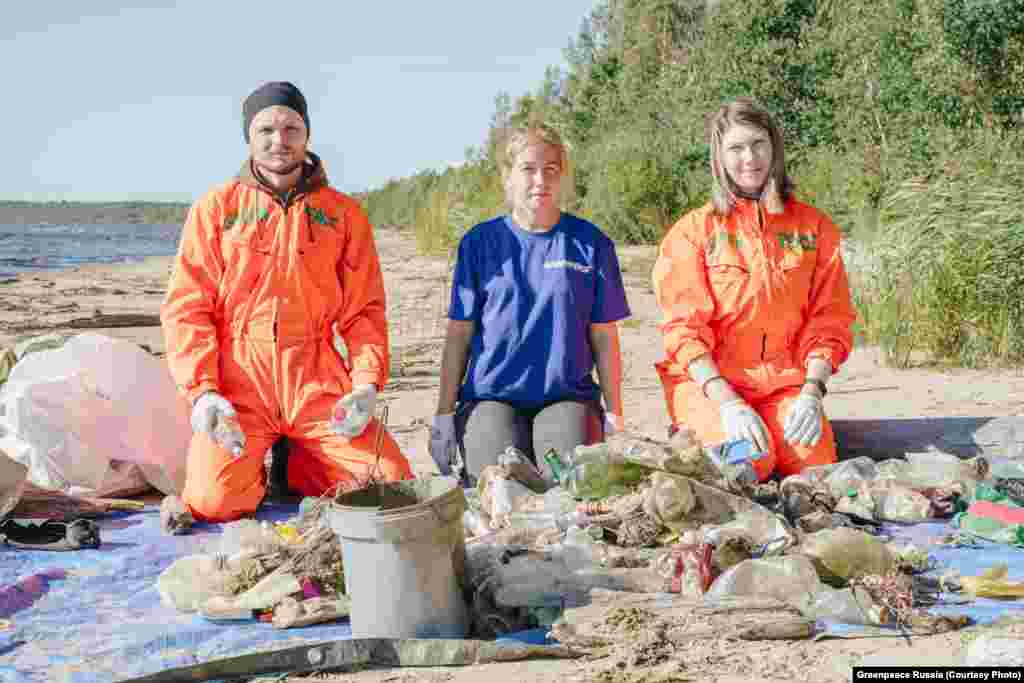
8
Nesterov (left) says: “Plastic is light, it migrates easily. What we find is just the tip of the iceberg. Part of the waste sinks, and the current won’t bring it ashore.”
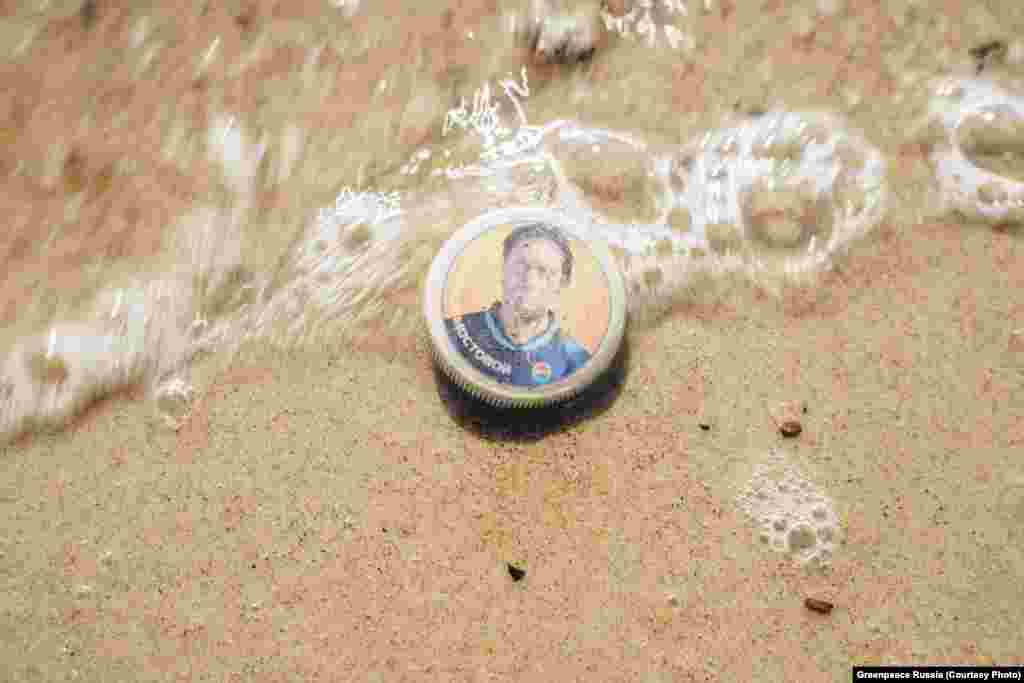
9
A plastic bottle cap. Nesterov says: “Plastic could be collected, but over time it is exposed to the sun and weather and disintegrates into small pieces, microplastic, which is impossible to clear out.”
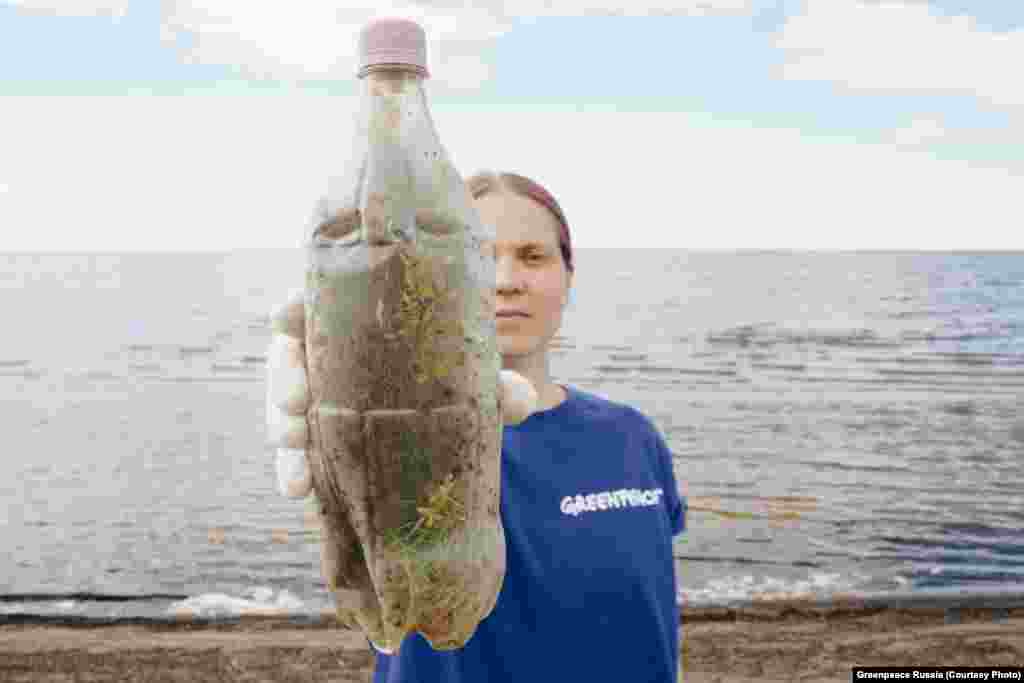
10
Greenpeace says that only half of all plastic bottles are recycled. Bottles that are thrown out end up in dumps, rivers, forests, and on shorelines.
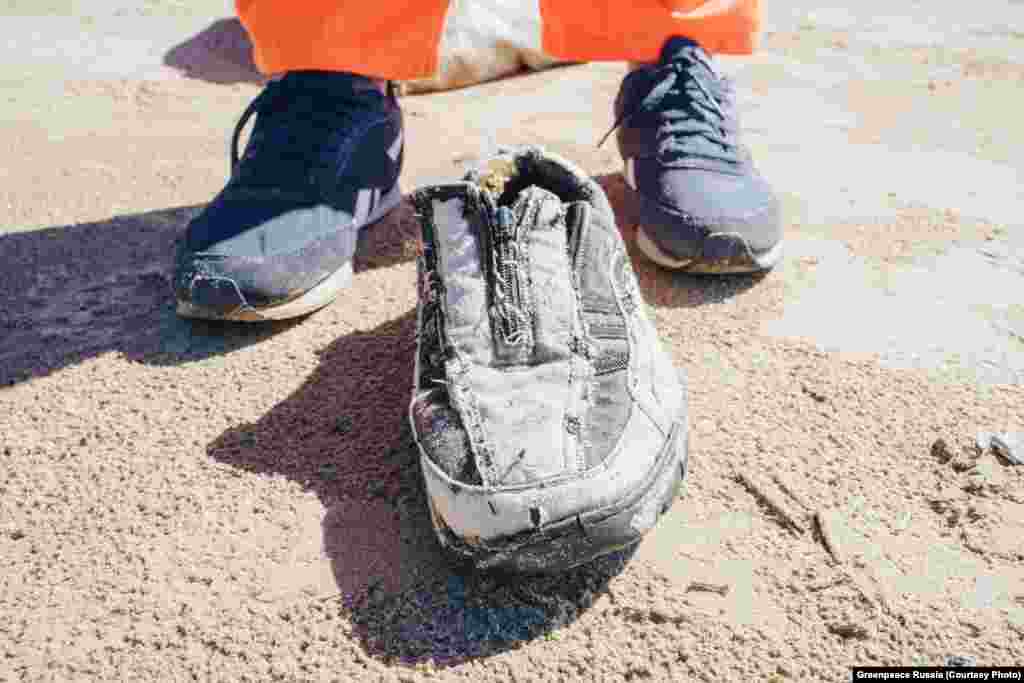
11
Greenpeace Russia has gone on similar expeditions on the Curonian Spit and Lake Baikal. The group uses the results of their studies in campaigns against the production of disposable goods.
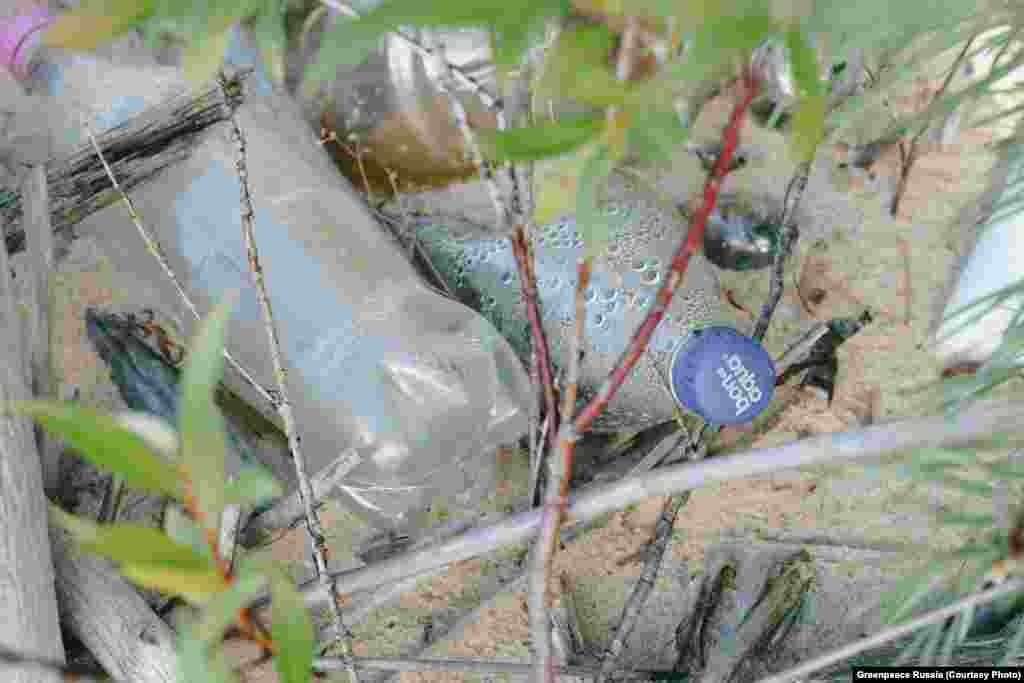
12
Nesterov says: “Bird migration is studied in the Nizhne-Svirsky Nature Reserve and there are over 256 types of birds here. Some of them suffer from plastic: they eat it instead of fish, stuffing their gastrointestinal tract. It affects their health, and they can die.”
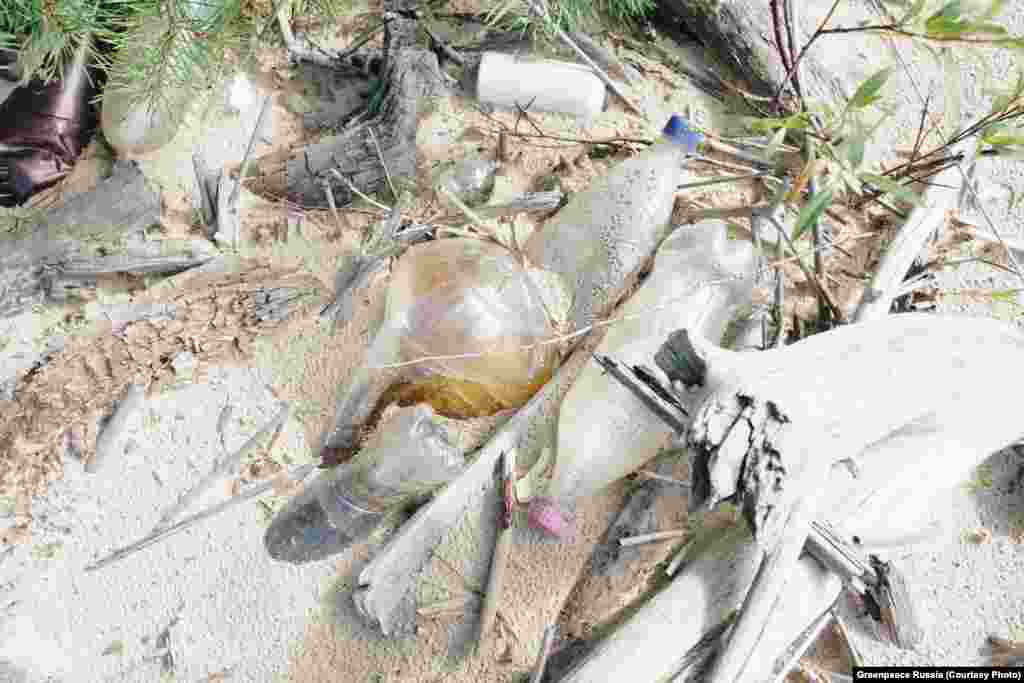
13
Greenpeace's Nesterov says: “Humanity has produced about 8 billion tons of plastic since the 1950s. Only 9 percent of it has been recycled. We can see that recycling doesn’t solve the problem of disposable plastic. Our priority should be to stop producing plastic waste in the first place.”
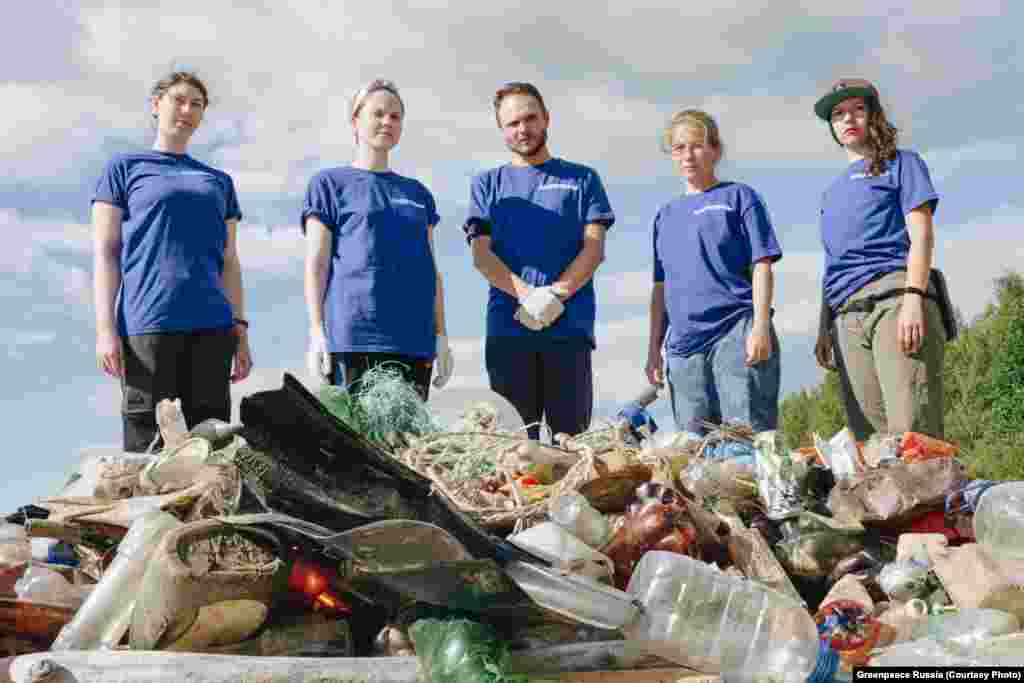
14
Nesterov says: “It’s important to change people’s consumer habits. People buy and consume things quickly, using disposable cups for takeout coffee or lunch boxes. The government could ban some types of balloons, for example, which would reduce the risk of pollution. You can call that a Draconian measure, but it shows the severity of the problem.”